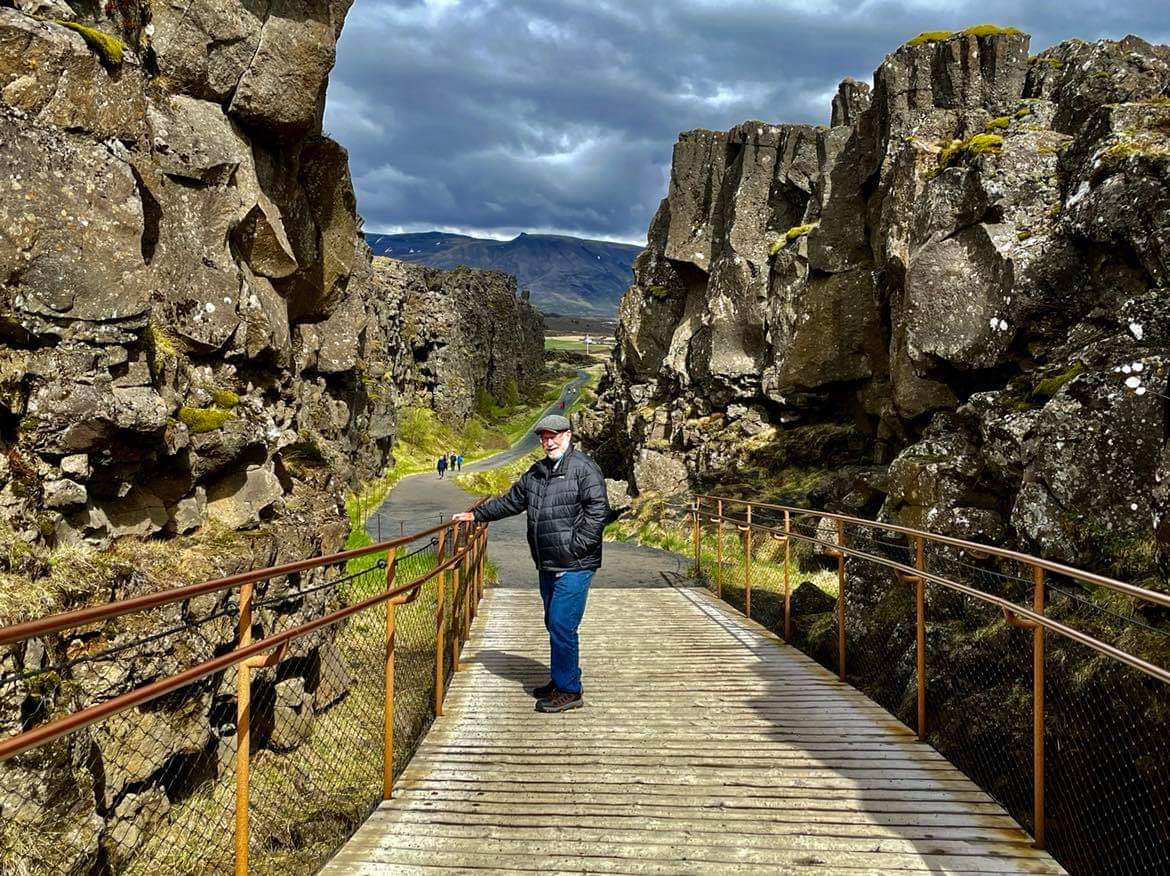
Fire and ice day 11: “Stop and go”
July 8, 2021
Photo credit: Carol Madigan
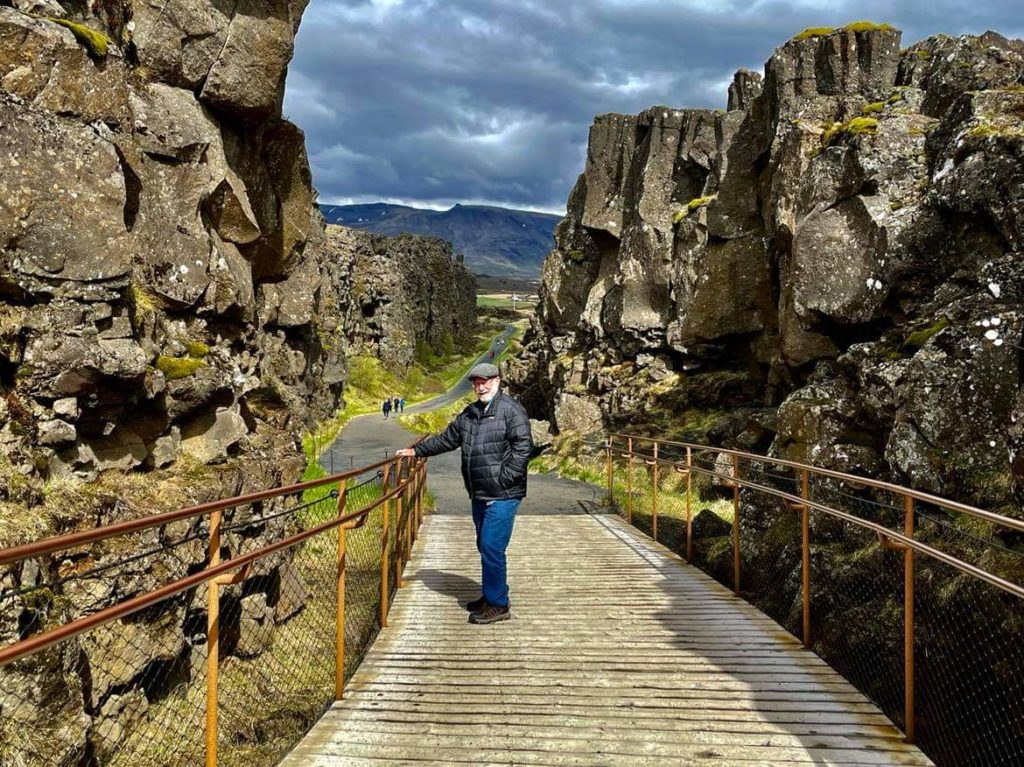
I once interviewed a museum renovation architect. (And if you think these blogs can be narcoleptic, you should have read that piece!) During the course of my interview, he mentioned a phenomenon of museum-going that I’d certainly experienced, but never realized there was a name for it: museum fatigue. Basically, it is the stop-and-go, heavy-legged, lead-eyed feeling that comes over you, when you’re at a museum where you can’t detect the end of it. Like the Louvre, for instance.
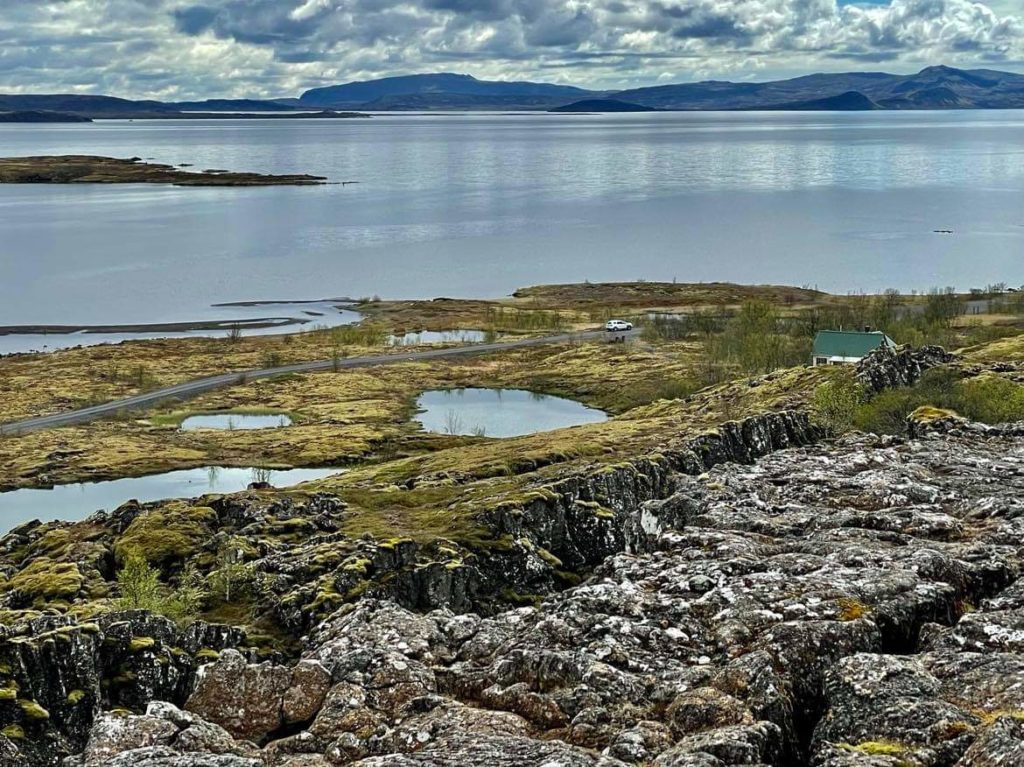
Well, in my warped little world, the same phenomenon hits me when we begin a day with a series of sights to stop and see. I’ve written earlier about what I like best about travel is the going and not the getting there. Which explains why I like trains so much (you just go, and don’t have to do anything but sit and stare).
And so we began our final day of our Ring Road excursion, with a plan to see not one, not two, but three of Iceland’s more famous stops. Previously, we’d begin our days with maybe one must see on our itinerary, and then Carol would come up with others as we went along. Not knowing what might be coming next gave me a liberating sense of flex and freedom, always holding out the remote possibility that we might not stop anywhere until, say, lunch.
As they say, size matters when it comes to geothermal eructations, and Old Faithful’s 130-foot spurt average clobbers Strokkur’s 50 feet. On the other hand, Strokkur goes off every 5-10 minutes, compared to Faithful’s needing up to two hours. Ah, youth.
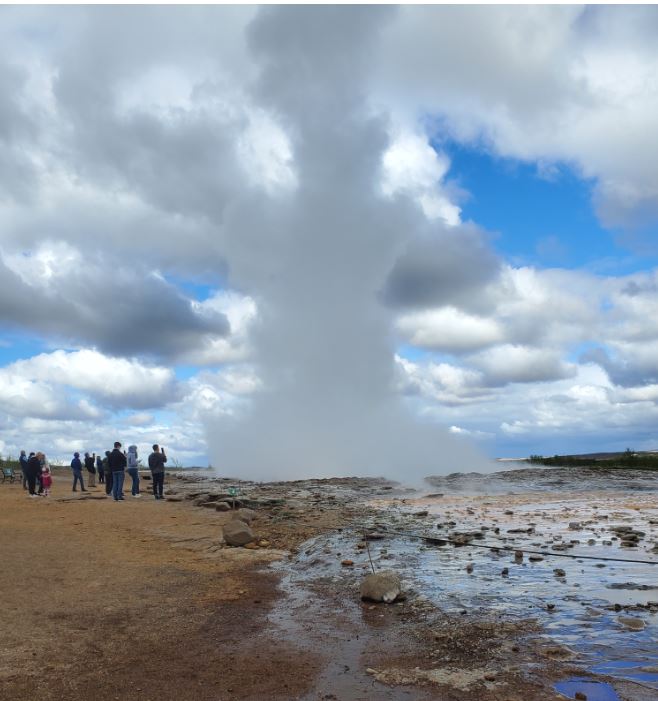
But today there were three fixed locations on our itinerary with no flex. I was locked in, locked down and grinding it out for the whole day. Carol was elated she didn’t have to spend the day combing our guidebook for things to do besides just driving, which had been fine with me. (My favorite sightseeing day was the one where Carol said, “There’s really nothing between here and Hofn, which is four hours away.” It made me feel I was truly on a magic carpet.)
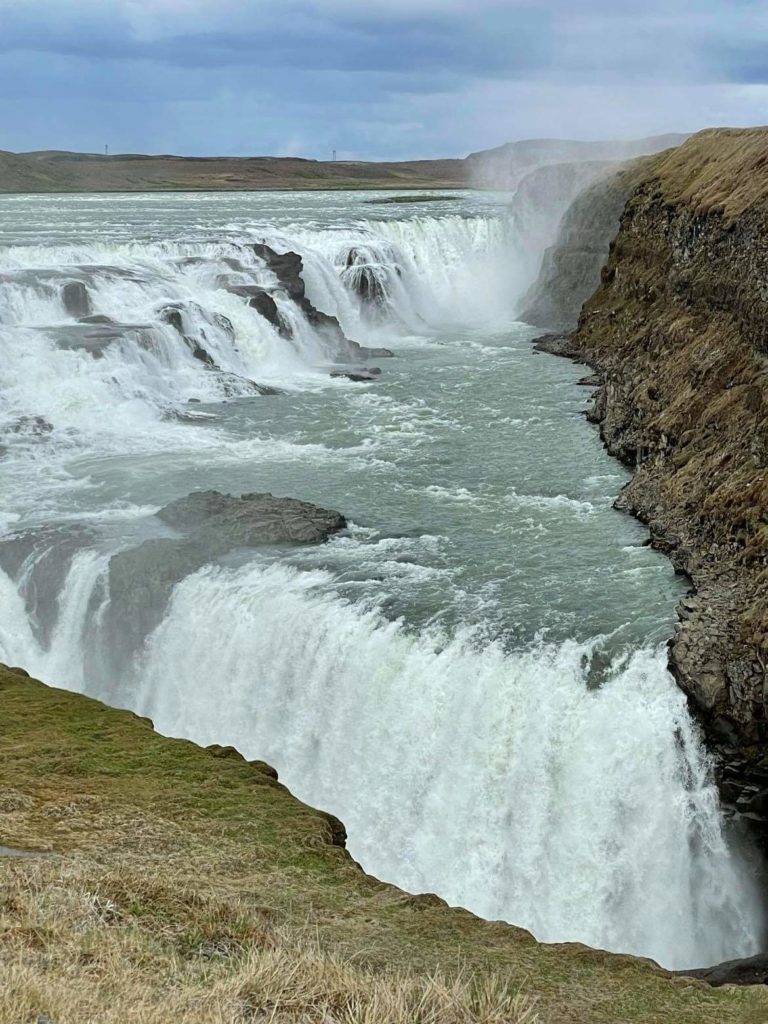
Our first stop was Þingvellir (or Thingvellir), a national park, where the two tectonic plates that form the North American and Eurasian continents first split apart, leaving a rift valley and gorge as its visible evidence. Expecting to view something as dramatic as the Grand Canyon, we were taken aback by being unable to immediately identify where in the valley North America ended and Europe began. Plate tectonics was taking a distant second place to the Colorado River in terms of leaving behind awe inspiring evidence of its handiwork. Hydrology 1 Geology 0.
Next up was Geysir, yet another international competition between Yellowstone’s Old Faithful and Iceland’s Strokkur. As they say, size matters when it comes to geothermal eructations, and Old Faithful’s 130-foot spurt average clobbers Strokkur’s 50 feet. On the other hand, Strokkur goes off every 5-10 minutes, compared to Faithful’s needing up to two hours. Ah, youth.
The final stop of the day was Gullfoss waterfall. Here again, the comparison is begged with Niagara Falls. But Niagara’s near 170-ft drop dwarfs Gullfoss’ 70, so Iceland comes up short again. But here’s the clincher: we saw Þingvellir, Geysir and Gullfoss all in the space of less than an hour’s drive total. Try doing that by getting from the Grand Canyon to Old Faithful and Niagara Falls, and you can easily see what a true, accessible wonderland Iceland is.
Oh, circling back to museum fatigue for a moment. On the drive back to Selfoss after this three-stop day, I could barely keep my eyes open. Yet, this was the shortest driving day of them all. But the rift, followed by the geyser and then the waterfall had the same effect on me as a museum without an end in sight. I felt like I was driving home from the Louvre. At least what I saw this day did beat anything hanging pretentiously on endless walls could have shown me.
Need to catch up on our Iceland trip from the beginning? Start here! Fire and Ice: Day 1
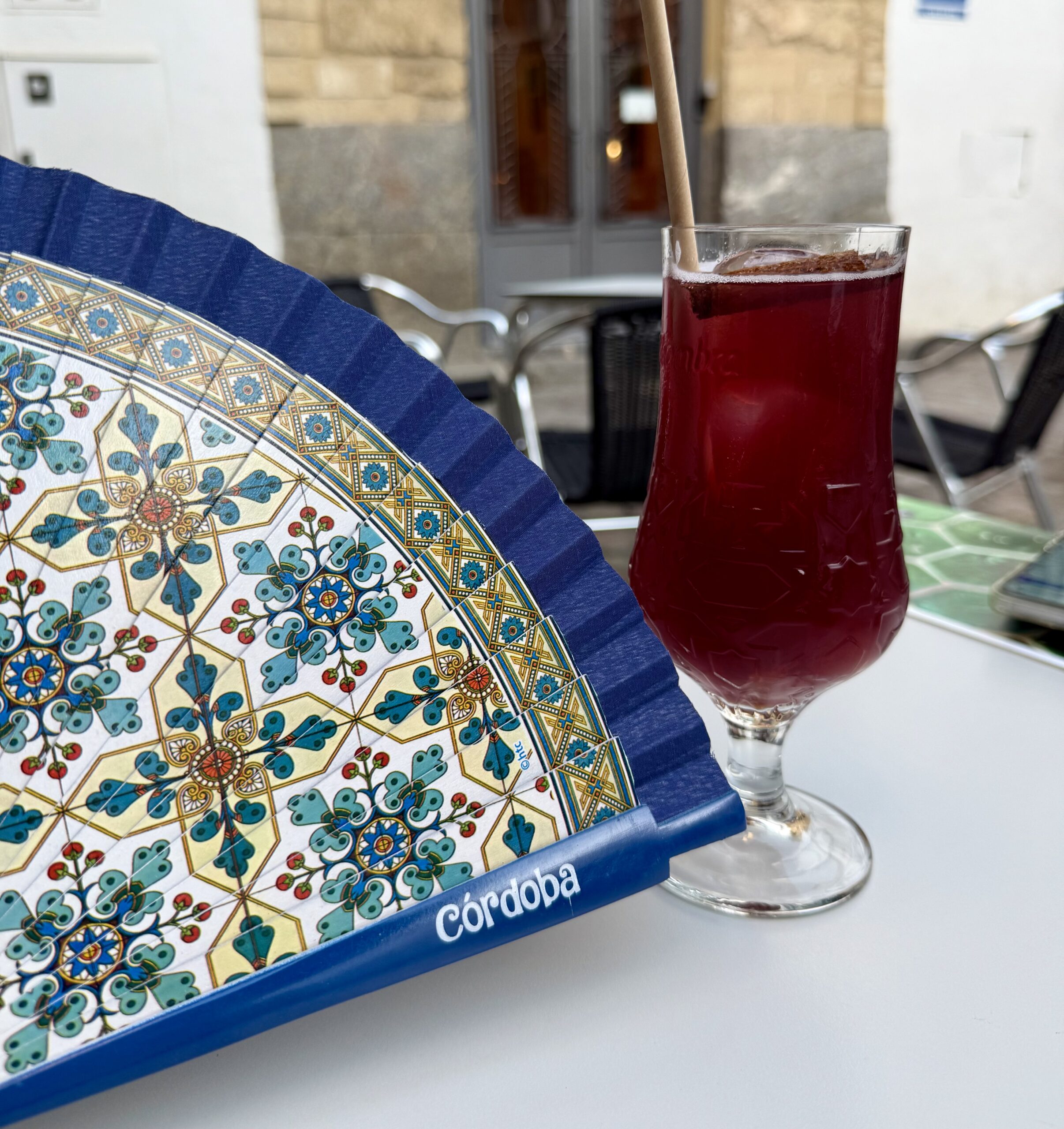
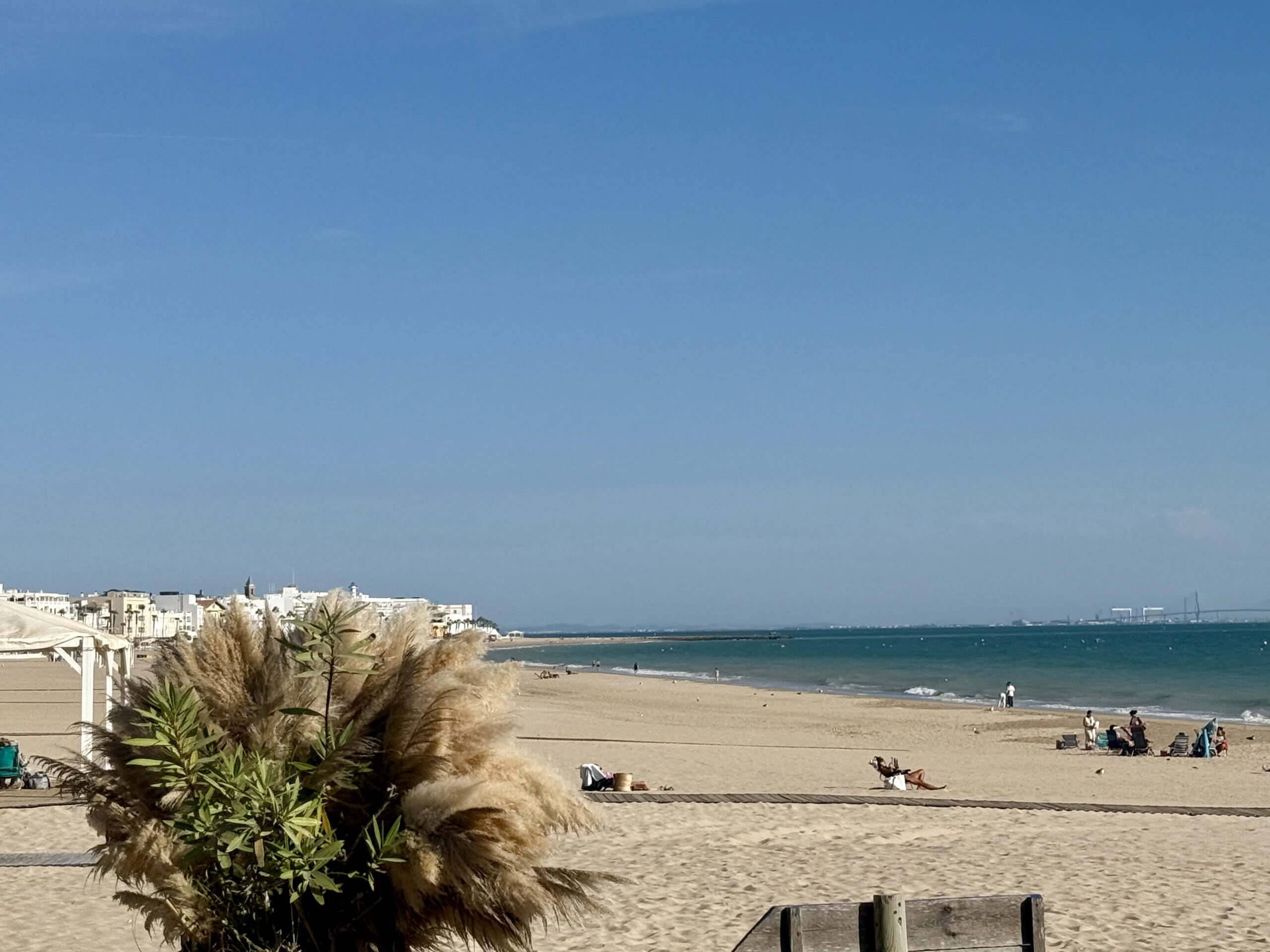

Be the first to comment